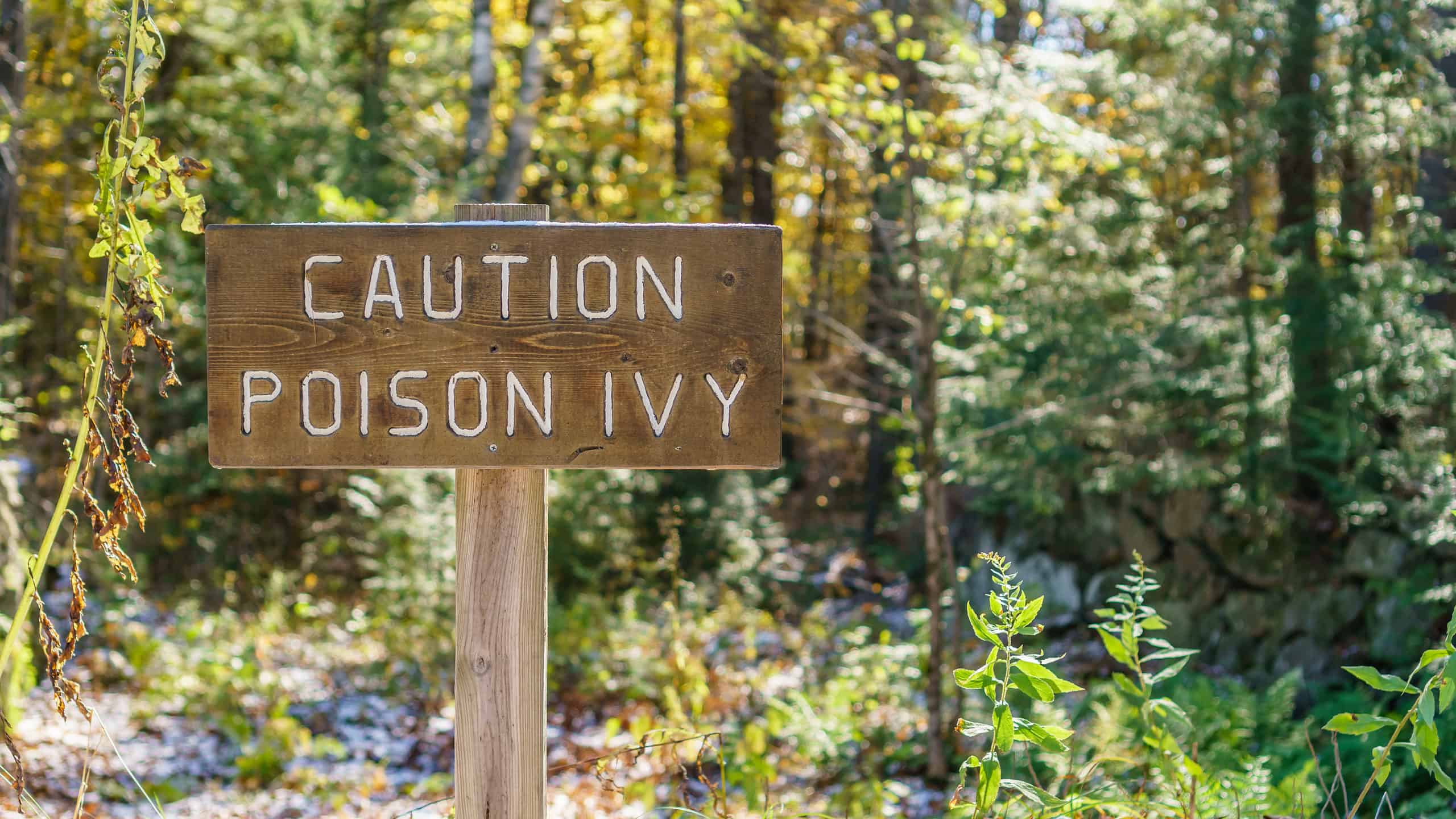Poison ivy is found all over North America if the area is moist enough. It’s also a common irritant that is the bane of gardeners and hikers. What should you do if you find it on your property? We’re going to discuss four safe and effective ways to get rid of poison ivy from your yard.

What Is Poison Ivy?

Poison ivy is a toxic plant with leaves that have three leaflets per leaf.
©Elena Elisseeva/Shutterstock.com
Poison ivy is a plant that creates a toxic resin called urushiol, which causes a nasty rash in up to 75 percent of the human population. This resin is in all of the plant’s parts including the roots, leaves, flowers, stems, and berries.
Poison ivy likes wooded places, and while it starts as a small plant, it gets big fast. It grows as a creeping vine in shaded areas, and it appears as a sturdy bush in places with constant sunlight.
These plants have compound leaves with three leaflets per leaf. That’s why the familiar adage “leaves of three, let it be” exists. In the spring and the summer, its leaves may be red instead of green.
How Does Poison Ivy Get Into Your Yard?
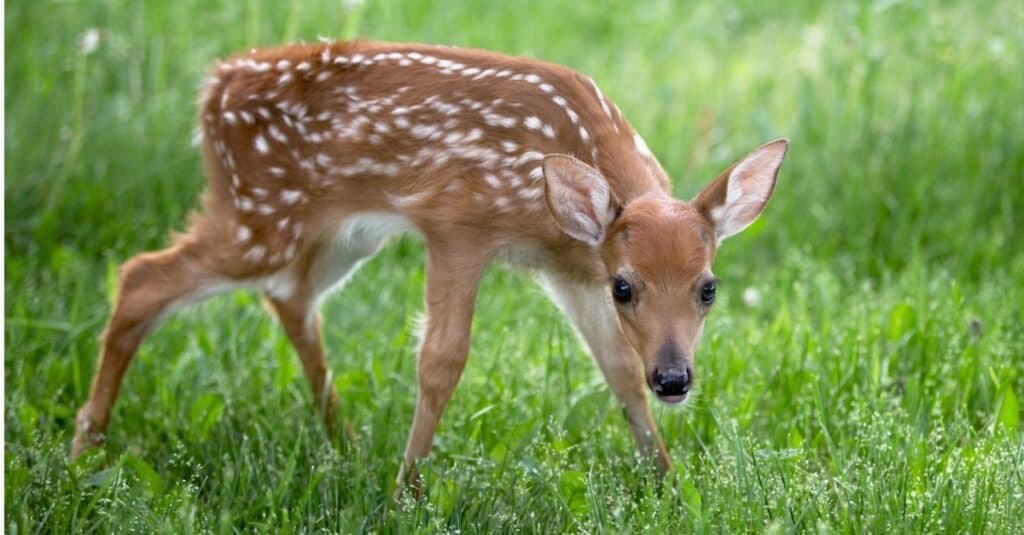
Deer and birds consume poison ivy because they aren’t affected by its toxin.
©iStock.com/Lynn_Bystrom
Some animals, like deer and birds, consume poison ivy as a regular food source. Birds spread the seeds by dropping them in your yard or by leaving feces with seeds in it on your property.
Poison ivy is hard to remove partially because it has hardy rhizomes that live in the soil. Rhizomes are big root stalks that act like a beefy plant stem. This horizontal underground stem can create the shoots and roots of new plants and effectively spreads the poison ivy anywhere the rhizome manages to grow.
4 Ways to Get Rid of Poison Ivy From Your Yard
These methods can help remove poison ivy from your garden or yard:
- Dig up the poison ivy in your yard.
- Pour boiling water on poison ivy roots.
- Use a non-toxic DIY weed killer on poison ivy.
- Rent goats to eat the poison ivy in your yard.
Once you have removed poison ivy plants and roots from your yard, do not add them to your compost pile or burn them! If they’re added to your compost, the chances of you coming in contact with any remaining urushiol is high as the resin lasts up to five years. Burning the plant releases the urushiol into the air which can cause painful eye and lung irritation.
1. Dig Up the Poison Ivy in Your Yard
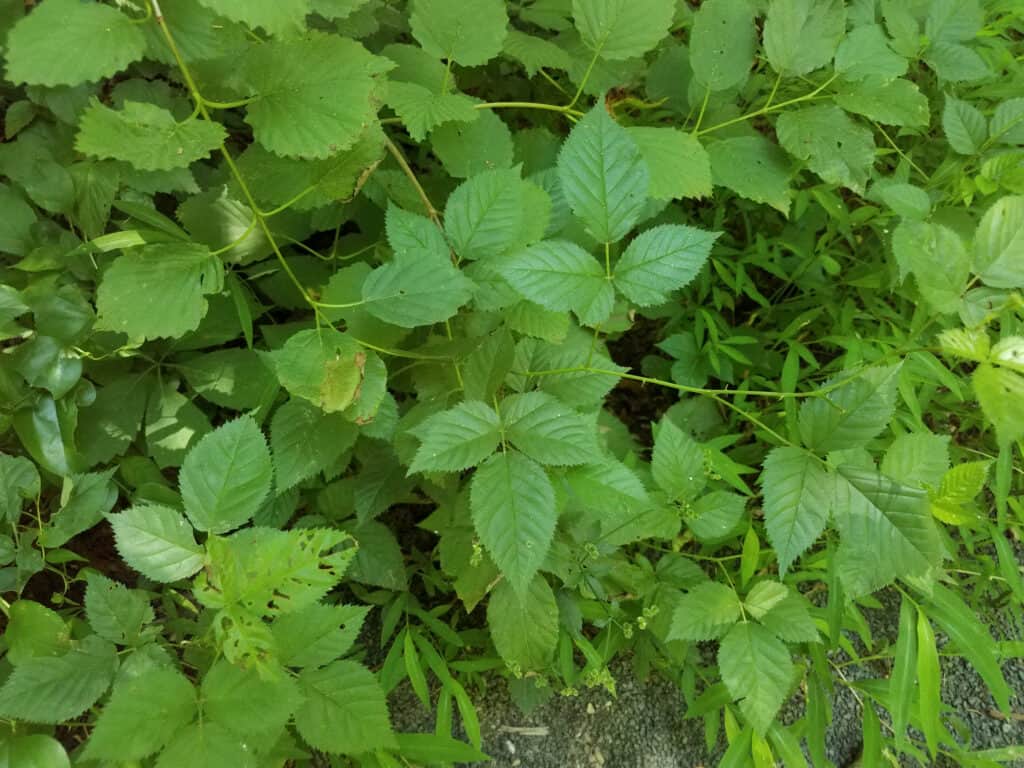
Removing poison ivy by hand is tricky because you’ll have to dig up the entire root system to kill it.
©iStock.com/Justin Smith
Poison ivy can be removed by hand. Pulling the visible parts of the plant like a weed is a great way to start. However, keep in mind that simple pulling without other employed methods doesn’t completely kill the plant. You may end up having to pull the same poison ivy for years before it finally dies.
You’ll have to dig deep and get all of its roots out of the ground if you don’t want the plant to quickly grow back. It’s recommended that you dig at least 8 inches into the dirt to pull up the entire root system.
Removing poison ivy by hand is risky because the chances of coming in contact with the plant are high. However, precautions can be taken to reduce this risk. Wear long-sleeved shirts, long gardening gloves, and tuck long pants into socks. Duct tape can even be used around pant legs and between gloves and long sleeves to guarantee that the plant’s resin does not get on your skin.
Thoroughly clean any tools that you use immediately after digging up the plant. Using a liberal amount of rubbing alcohol is one way to clean your trowels, shovels, and any other items. This is an important step as the resin will remain active for years if not removed.
2. Pour Boiling Water on Poison Ivy Roots
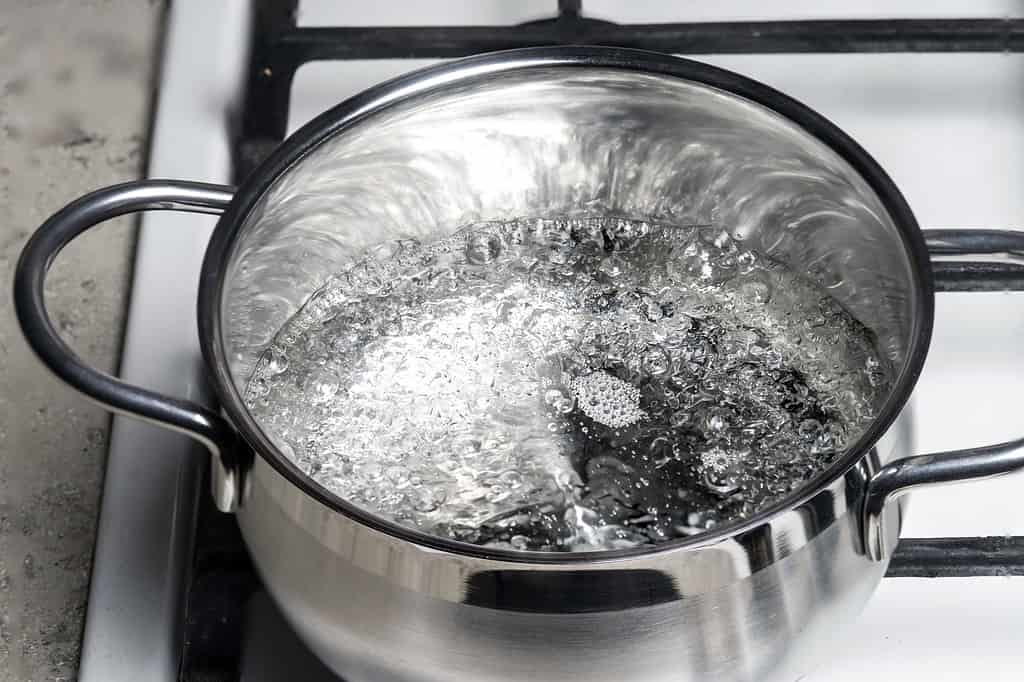
Boiling water can be used to kill poison ivy roots.
©VladK213/iStock / Getty Images Plus via Getty Images
After pulling the visible parts of the plant, pouring boiling water on any leftover roots will help kill them. This will need to be done repeatedly over an extended period to ensure that the roots have died.
3. Use a Non-Toxic DIY Weed Killer on Poison Ivy
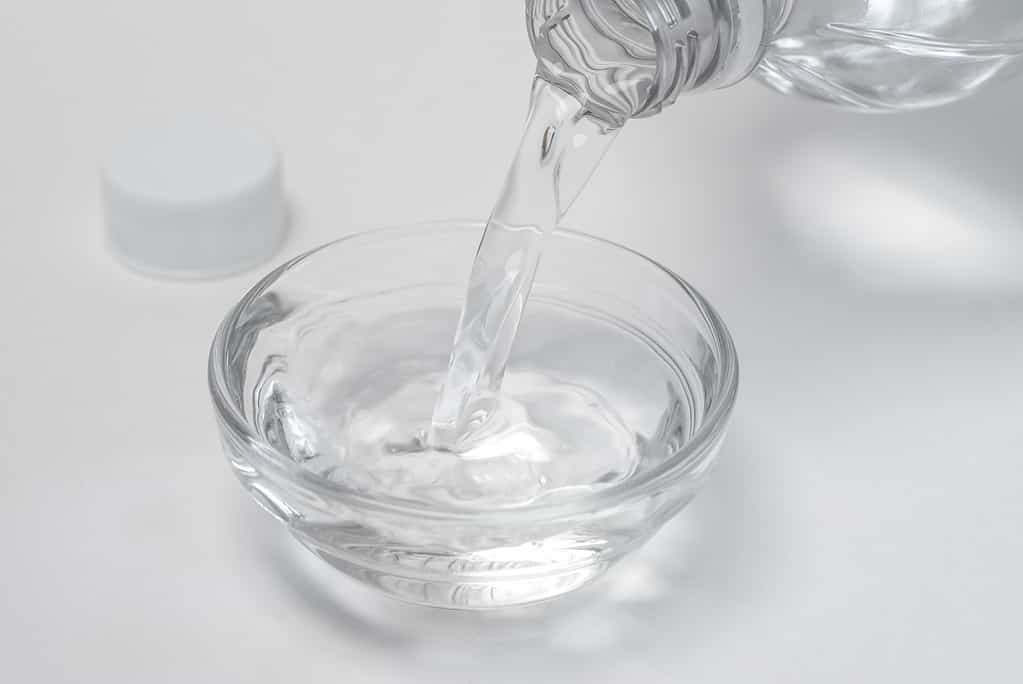
Vinegar mixed with dish soap and salt is an effective DIY weed killer.
©iStock.com/Michelle Lee Photography
For people trying to avoid using harmful pesticides, at-home weed killers can be made to keep poison ivy at bay. The instructions to make the perfect DIY poison ivy killer varies, but they’re relatively similar to each other. The ratios of the ingredients differ based on which gardener gave you the recipe.
For a potent at-home remedy to your poison ivy problem, mix a quarter cup of dish soap and 3 pounds of salt into a gallon of water. Spray this mixture on the poison ivy leaves every day until the plant dies.
A less intense version of the recipe above is also used, and this version is recommended if the poison ivy is close to desired vegetation. Starting with a gallon of water, add one cup of salt, one tablespoon of dish soap, and one tablespoon of white vinegar. Put this mixture in a spray bottle and regularly spray the poison ivy until the plant dies.
Make sure you spray the poison ivy on clear days when the plant leaves are dry. A storm right after an application will wash away the salt and other ingredients. If the leaves are wet when you apply your solution, the chance of it dripping off before it has a chance to damage the leaves is possible.
You’ll also want to avoid spreading these mixtures over your entire yard unless you’re trying to kill the surrounding plants as well. If you’re not trying to kill everything in your garden, take care to only spray the poison ivy plant. Any excess spray will damage the other plants you want in your yard.
4. Rent Goats to Eat the Poison Ivy in Your Yard
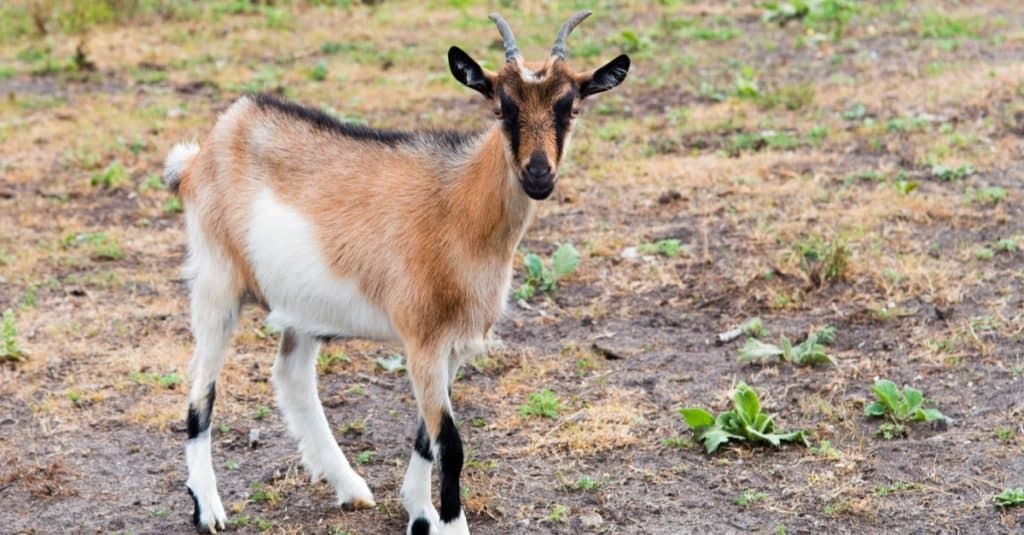
You can enlist the help of goats, who will eat the poison ivy in your yard.
©volofin/Shutterstock.com
Goats are one of the farm animals that safely consume poison ivy without getting sick. They also fertilize the ground with their excrement as they eat, which is a bonus that justifies the cost of using these animals.
Renting goats will cost between 50 to 100 dollars per hour on average for small properties. Some companies will give a discount if you’re clearing acreage by renting goats at a monthly rate.
Goats only clear the visible parts of the plant, which leaves the roots behind. However, using goats frequently will eventually fully kill poison ivy because they keep eating the parts of the plant that produce energy. With constant grazing, the plant roots starve to death.
If you hire goats to clear out your yard, keep in mind that you shouldn’t pet the goats. That’s because the urushiol resin will stay on their fur, which easily transfers onto you and causes problems.
Thank you for reading! Have some feedback for us? Contact the AZ Animals editorial team.

